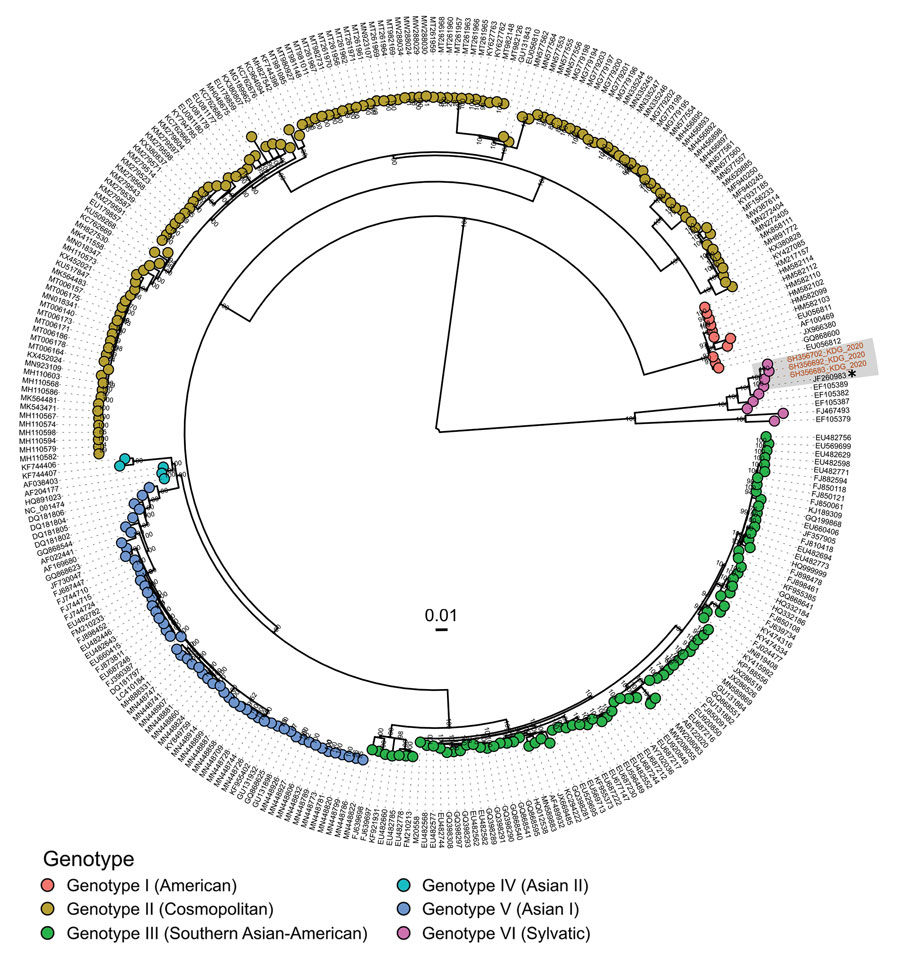Volume 30, Number 4—April 2024
Dispatch
Reemergence of Sylvatic Dengue Virus Serotype 2 in Kedougou, Senegal, 2020
Figure 2

Figure 2. Phylogenetic analysis of dengue virus genomes in study of reemergence of sylvatic dengue virus serotype 2 in Kedougou, Senegal, 2020. Maximum-likelihood tree shows the relationships between sequenced dengue virus strains from the outbreak in Kedougou (red text) and sequences obtained from GenBank. Sequenced strains in this study belong to the sylvatic dengue virus serotype 2 genotype and are closely related to a sequence obtained in 2009 in Guinea-Bissau (asterisk).
1These authors contributed equally to this article.
Page created: February 08, 2024
Page updated: March 20, 2024
Page reviewed: March 20, 2024
The conclusions, findings, and opinions expressed by authors contributing to this journal do not necessarily reflect the official position of the U.S. Department of Health and Human Services, the Public Health Service, the Centers for Disease Control and Prevention, or the authors' affiliated institutions. Use of trade names is for identification only and does not imply endorsement by any of the groups named above.